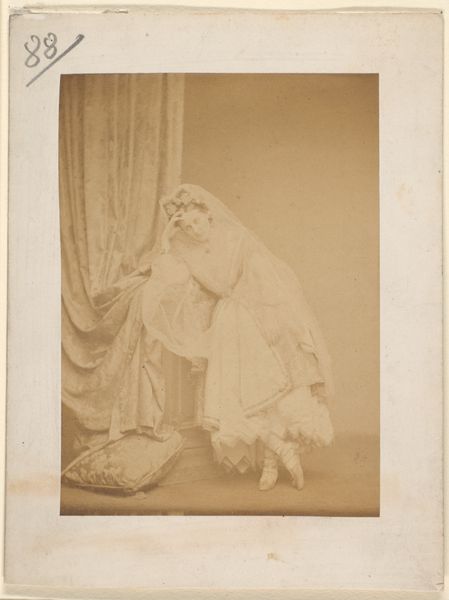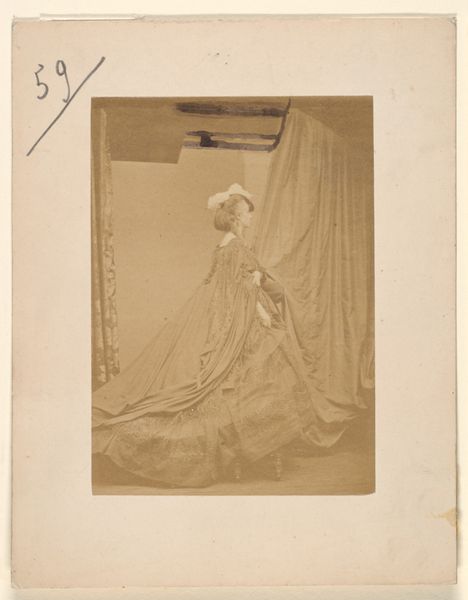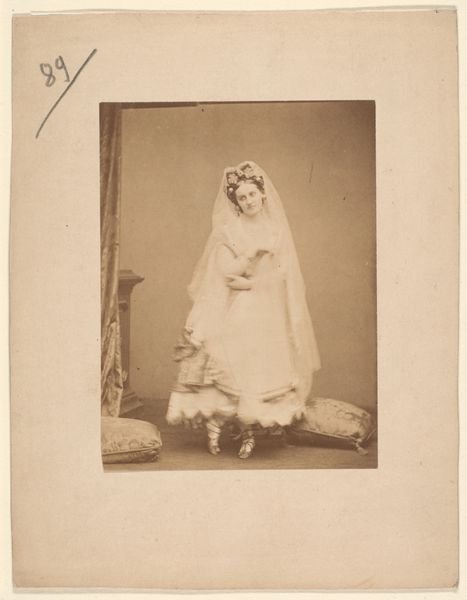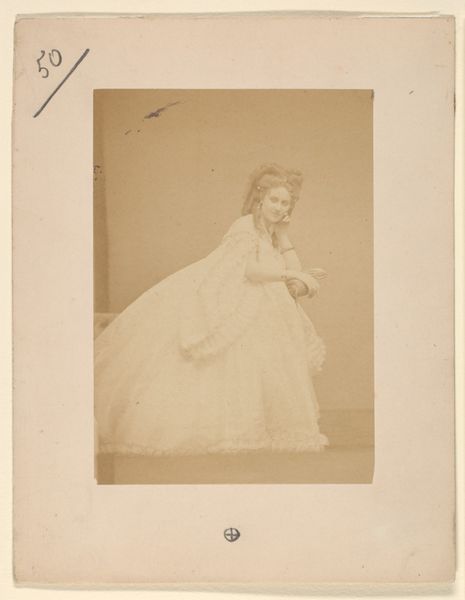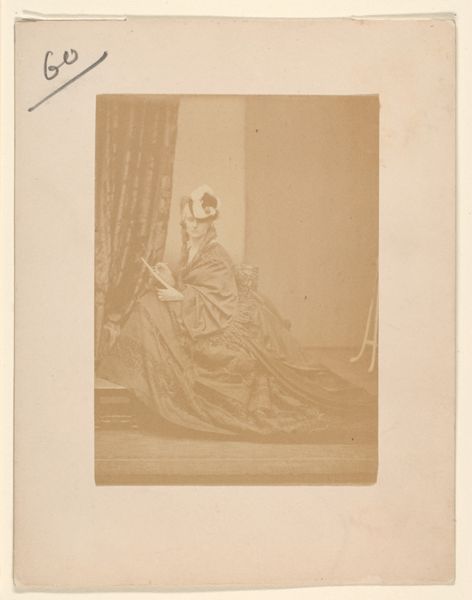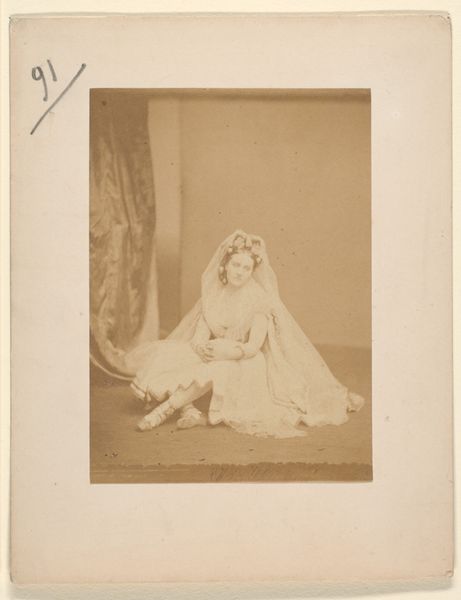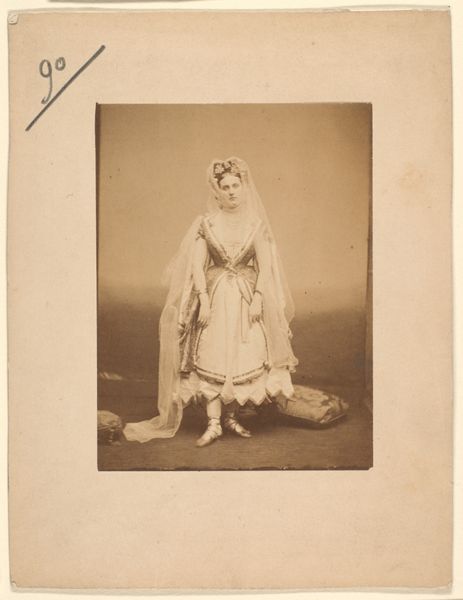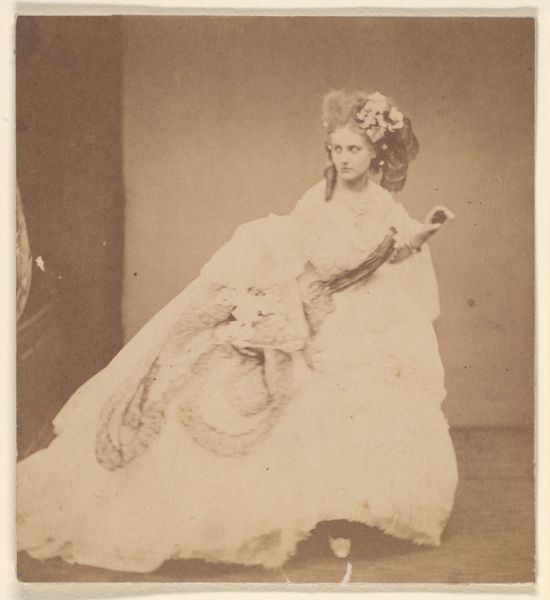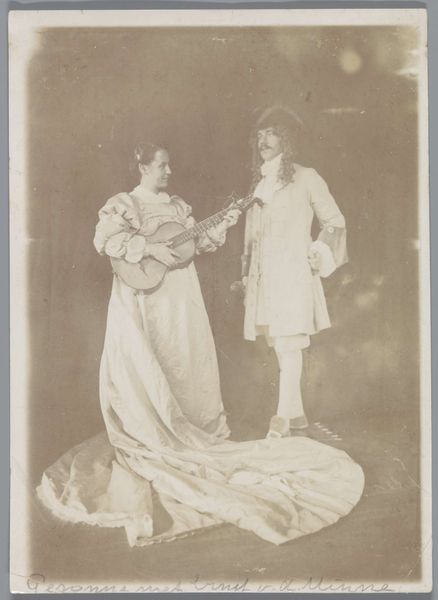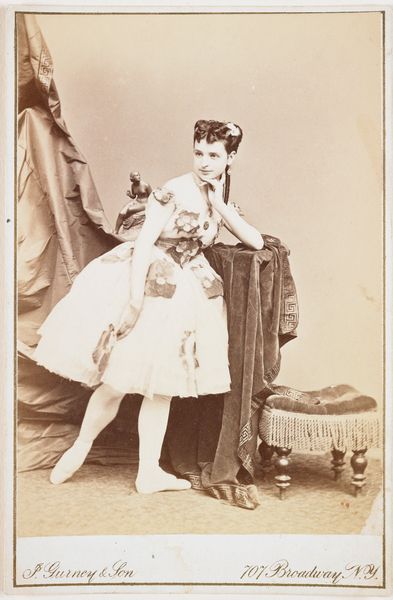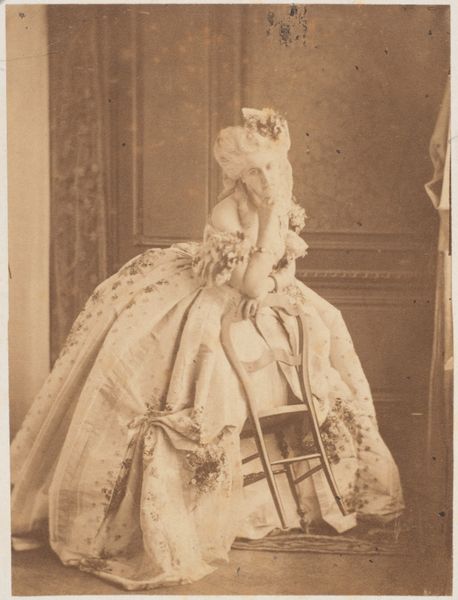
Copyright: Public Domain
Editor: This is “Le voile,” or “The Veil,” a photograph from the 1860s by Pierre-Louis Pierson, currently held at The Met. I’m struck by the image of this veiled figure standing before a mirror. It’s so… mysterious. How do you interpret this work? Curator: The figure’s veil is indeed key. It’s not merely a fashion statement, but a potent symbol ripe with sociocultural implications. Consider how the veil has historically functioned – it can be about modesty and piety, yes, but also about power, oppression, and control. Who gets to unveil, and when? Who is granted access to seeing, and being seen? And who profits from such seeing or not seeing? Editor: That's interesting! I hadn’t really thought about the power dynamics of veiling. The photograph is considered to be a self-portrait. Does this framing shift our reading of it? Curator: Absolutely. Seeing this as a self-portrait opens new avenues for exploration. The photographer, Pierson, was the official photographer of Countess de Castiglione. How do we understand the relationship of the photographer and his subject? Perhaps this photograph reflects their agency, collaboration, and the complex power relations within their dynamic? And perhaps the ambiguity of the reflection only furthers to veil not only a body, but perhaps also intentions? Editor: So the veil becomes a multi-layered symbol, hinting at themes of identity, gender, and perhaps social commentary? I see the importance of looking at these images through a much wider scope than just the immediate subject. Curator: Precisely. This approach allows us to examine the intricacies of the historical period. Now what can we say about how photography at the time functions within and around this relationship? Editor: Thinking about photography this way makes it even more interesting and intricate! Curator: I agree!
Comments
No comments
Be the first to comment and join the conversation on the ultimate creative platform.
